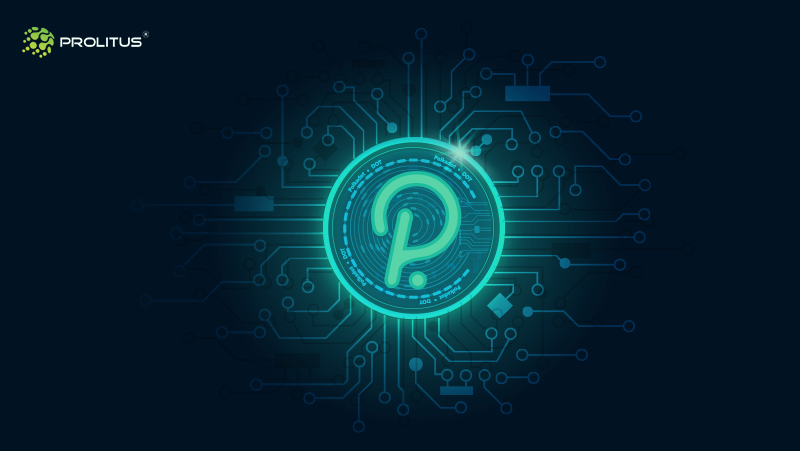Polkadot is a famous blockchain that allows seamless communication between blockchains. It helps in the easy flow of data without any intermediary, making it highly scalable. The network is made up of the main blockchain, also called the relay chain, and several parallel chains, or parachains, that were made by users.
Polkadot uses parallel blockchains (also known as parachains) to process demand from the main blockchain. The blockchain has a connecting layer, or “bridge,” allowing value and data transfer between most blockchains. Let’s understand the term ‘parachains’ first.
What are Parachains?
A parachain is an application-specific data structure or layer-1 blockchain that runs in parallel within the Polkadot ecosystem. Parachains are connected to the main blockchain (relay chain) and inherit all the properties of Polkadot, such as scalability, security, interoperability, and governance.
A parachain will act as a blockchain in network, but it will not essentially be an actual blockchain. Polkadot’s cross-chain composability means that parachains can receive any data or asset and can even use cross-network bridges to connect to other networks like Ethereum.
Parachains are a significant contributor to Polkadot’s scalability as they can parallelize transaction processing. As we’ve already talked about, parachains also improve the security of the whole network and can talk to each other using the XCM format.
How Does Parachain Work?
A collator is a network maintainer that maintains all the parachains. Its primary role is to maintain a full node of the parachain and retain all necessary information. The collator further produces new block candidates to pass to the Relay Chain validators.
The Polkadot Host (PH) checks for the state transitions on parachains that need to be Wasm executable. It also requires proof of new state transitions on a parachain to be validated against the registered state transition function (STF) stored on the Relay Chain.
However, the only constraint is the logic of a parachain, which must be verifiable by the Relay Chain validators. The process takes the form of a bundled proof of a state transition (known as a Proof-of-Verification (PoV) block), which then gets to the validators for checking by the parachain collators.
Examples of Parachains
-
Smart Contract Chains:
Smart contract chains are chains that can add more logic through the deployment of code.
-
Encrypted Consortium Chains:
The private chains that do not leak any information to the public are known as encrypted consortium chains.
-
High-Frequency Chains:
The chains that can compute multiple transactions in a short period of time by making optimizations are known as high-frequency chains.
What are Parathreads?
Parathreads are better substitutes for projects that may not have the required capital to secure a parachain slot. In short, parathreads lower the barrier to numerous projects benefiting from shared security and connectivity.
Parathreads provide an option for parachains to temporarily participate in Polkadot security without the requirement to lease a dedicated parachain slot. It achieves this by sharing scarce resources among competing resources (parathreads).
Parathreads are suitable for chains that would not be able to acquire a complete parachain slot or do not find it economically sensible. Hence, even these parathreads can participate in Polkadot’s shared security with an associated fee.
Parathreads are a replacement for parachains that no longer require a dedicated parachain slot but would like to continue using the Relay Chain.
How do Parathreads Work?
A parachain slot does not ideally have to possess a parachain, as some of these slots on the main blockchain will be designated as part of the parathread pool. It means that the empty slots will be used as a space for the winner of the parathread fee auction.
A collaborator whose work was to maintain all the parachains will offer a bid in native token for the inclusion of a parathread block candidate. The leading blockchain (relay chain) block author can select from these bids to include a parathread block. The block candidate with the highest bid wins the show.
The overall process further distributes the rewards into 20-80, where 20% goes to the block author, and the rest goes into the Polkadot treasury.
Parathread Applications
Generally, the three applications below constitute the use of parathreads.
- for the applications that seek an on-ramp to the Polkadot.
- For the applications that are worried about losing parachain slots,
- For the application with fewer rights than those reads.
What is the difference between Parachain vs. Parathread?
Parathreads are a substitute that helps connect to the Polkadot blockchain using a pay-as-you-go model. It is particularly suitable for projects that do not require continuous connectivity to the network. Depending on their needs, a blockchain can easily switch from parathread to parachain and vice versa.
Parathreads and Parachain have the same benefits when they connect to Polkadot. The difference arises from the fact of economic viability. The parathreads have a fixed fee for registration, and parachains are registered through a parachain slot auction. Also, the registration of the parathread only provides the registration of the parathread code to the Polkadot Relay Chain.
It concludes with the statement that in the future, we could witness that prices will go down in times of low activity, and fees will be higher in busier times.





